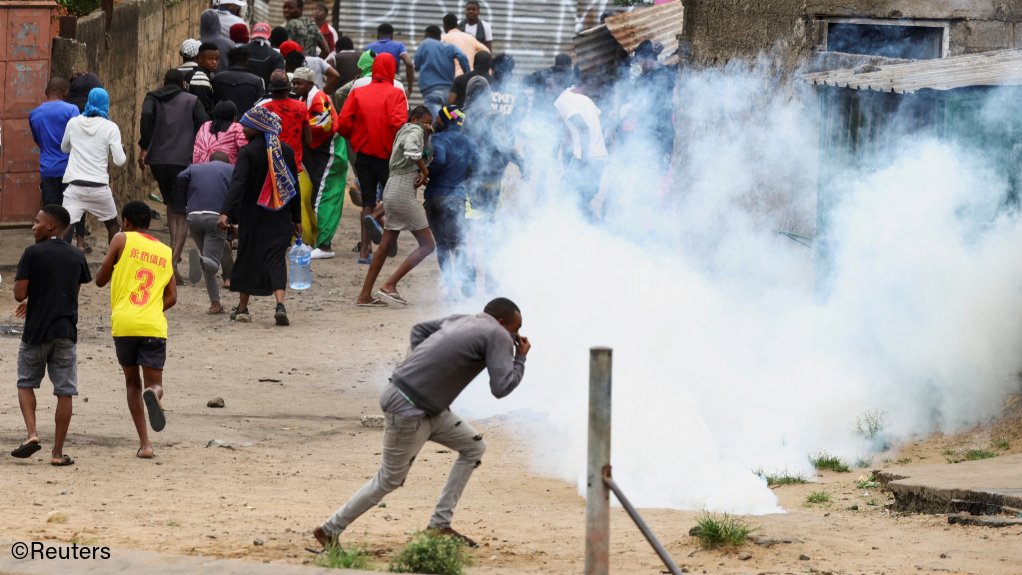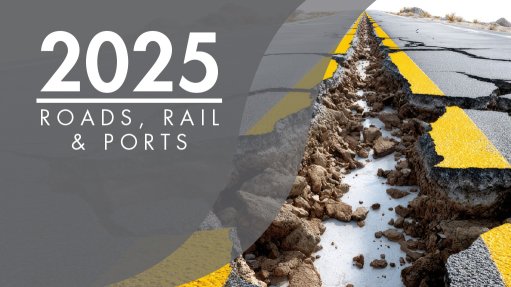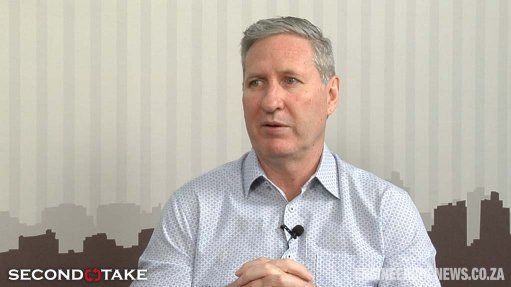World Bank warns of deepening poverty in conflict-hit economies
Conflict and instability are taking a toll on 39 affected economies, driving extreme poverty faster than anywhere else, worsening acute hunger, and pushing key development goals farther out of reach, according to the World Bank’s first comprehensive assessment of their plight in Covid-19 pandemic.
As conflicts have become more frequent and deadly in the 2020s, these economies are lagging behind all other economies in key indicators of development, the analysis finds.
Since 2020, their per capita gross domestic product (GDP) has shrunk by an average of 1.8% a year, while it has expanded by 2.9% a year in other developing economies. This year, 421-million people are living on less than $3 a day in economies afflicted by conflict or instability – more than in the rest of the world combined. That number is projected to rise to 435-million, or nearly 60% of the world’s extreme poor, by 2030.
“For the last three years, the world’s attention has been on the conflicts in Ukraine and the Middle East, and this focus has now intensified. Yet, more than 70% of people suffering from conflict and instability are Africans. Untreated, these conditions become chronic. Half of the countries facing conflict or instability today have been in such conditions for 15 years or more. Misery on this scale is inevitably contagious,” World Bank chief economist Indermit Gill said on June 27.
The new study underscores why the global goal of ending extreme poverty has been unattainable so far. It is now concentrated in areas of the world where progress is most difficult to achieve. Of the 39 economies currently classified as facing conflict or instability, 21 are in active conflict.
In developing economies in general, the extreme-poverty rate has been whittled down to just 6%. In economies facing conflict or instability, however, the rate is nearly 40%. Their GDP-per-capita levels, currently about $1 500 a year, have barely budged since 2010, even as GDP per capita has more than doubled to an average of $6 900 in other developing economies.
Moreover, unlike other developing economies, economies struggling with conflict or instability have been unable to generate sufficient employment to keep pace with population growth. In 2022, the latest year for which such data are available, more than 270-million people were of working age in these economies, but barely half of them were employed.
“Economic stagnation, rather than growth, has been the norm in economies hit by conflict and instability over the past decade and a half. The global community must pay greater attention to the plight of these economies. Jumpstarting growth and development here will not be easy, but it can be done, and it has been done before. With targeted policies and stronger international support, policy makers can prevent conflict, strengthen governance, accelerate growth, and create jobs,” World Bank deputy chief economist and Prospects Group director M Ayhan Kose said.
On a five-year basis, the frequency and lethality of conflicts have more than tripled since the early 2000s. The toll has been evident across the spectrum of development indicators, the report shows.
At 64, average life expectancy in economies suffering from conflict or instability is seven years lower than in other developing economies, while infant mortality rates are more than twice as high. Acute food insecurity afflicts 18% of their population, which is 18 times the average in other developing economies. Moreover, as much as 90% of school-age children do not meet minimum reading standards.
Once they get started, conflicts tend to be persistent, with the economic effects being both grave and long-lasting, the research shows. Currently, half of the economies facing conflict or instability have faced these kinds of conditions for 15 years or more. High-intensity conflicts, which are those that kill more than 150 out of every 1-million people, are typically followed by a cumulative drop of about 20% in GDP per capita after five years.
Under these circumstances, efforts to prevent conflict can yield high returns, the report says. It notes that “… early conflict-warning systems – particularly those that detect real-time shifts in risks – can enable timely interventions, which are far more cost-effective than responding after violence erupts.”
Preventing conflicts also means reducing “fragility”, which are defined as weaknesses in government institutions that limit their ability to drive sustained economic progress, maintain peace, and uphold justice.
Despite their challenges, these economies hold several potential advantages, the report states. With the right policies, growth could be ignited.
Profits from natural resources, such as minerals, forests, oil, gas, and coal, amount to more than 13% of their GDP on average. That is three times the share for other developing economies. Several of the affected economies, especially the Democratic Republic of Congo, Mozambique, and Zimbabwe, are rich in minerals needed for renewable-energy technologies such as electric vehicles, wind turbines, and solar panels.
Another potential long-term advantage is their young and growing populations. In most advanced and developing economies, the working-age population has already begun to stabilise or shrink. Not so in economies afflicted by conflict or instability, where the working-age population is expected to expand steadily. By 2055, nearly two out of every three people will be of working age, which is a larger share than anywhere else in the world.
Reaping a “demographic dividend”, however, require significant investment in education, health, infrastructure, and building a vibrant private sector that can generate more and better jobs, the report concludes.
Article Enquiry
Email Article
Save Article
Feedback
To advertise email advertising@creamermedia.co.za or click here
Comments
Press Office
Announcements
What's On
Subscribe to improve your user experience...
Option 1 (equivalent of R125 a month):
Receive a weekly copy of Creamer Media's Engineering News & Mining Weekly magazine
(print copy for those in South Africa and e-magazine for those outside of South Africa)
Receive daily email newsletters
Access to full search results
Access archive of magazine back copies
Access to Projects in Progress
Access to ONE Research Report of your choice in PDF format
Option 2 (equivalent of R375 a month):
All benefits from Option 1
PLUS
Access to Creamer Media's Research Channel Africa for ALL Research Reports, in PDF format, on various industrial and mining sectors
including Electricity; Water; Energy Transition; Hydrogen; Roads, Rail and Ports; Coal; Gold; Platinum; Battery Metals; etc.
Already a subscriber?
Forgotten your password?
Receive weekly copy of Creamer Media's Engineering News & Mining Weekly magazine (print copy for those in South Africa and e-magazine for those outside of South Africa)
➕
Recieve daily email newsletters
➕
Access to full search results
➕
Access archive of magazine back copies
➕
Access to Projects in Progress
➕
Access to ONE Research Report of your choice in PDF format
RESEARCH CHANNEL AFRICA
R4500 (equivalent of R375 a month)
SUBSCRIBEAll benefits from Option 1
➕
Access to Creamer Media's Research Channel Africa for ALL Research Reports on various industrial and mining sectors, in PDF format, including on:
Electricity
➕
Water
➕
Energy Transition
➕
Hydrogen
➕
Roads, Rail and Ports
➕
Coal
➕
Gold
➕
Platinum
➕
Battery Metals
➕
etc.
Receive all benefits from Option 1 or Option 2 delivered to numerous people at your company
➕
Multiple User names and Passwords for simultaneous log-ins
➕
Intranet integration access to all in your organisation





















